Rowing has long been known as a low-impact exercise that offers a great full-body workout. However, like all other exercises, overtraining or improper practicing may cause injuries. In addition to knee pain, back pain is one of the most common injuries of rowers.
Are you in the throes of rowing machine back pain? Do you want to ward it off before hopping on a rowing machine for a total body workout?
This article will walk you through the causes of rowing machine back pain as well as how to avoid and fix it to become a happier rower!
Table of Contents:
1. What is Rowing Machine Back Pain?
2. Causes and Fixes of Rowing Machine Back Pain?
3. Best Rowing Stretches to Relieve Rowing Machine Back Pain
4. Planking to Build a Strong Defense AGAINST Rowing Machine Back Pain
5. Health Reminder
6. The Bottom Line
1. What is Rowing Machine Back Pain?
As rowing really engages your back muscles, it helps improve your back strength and flexibility, thus prevents back pain. It is true. What’s also true is that you need to do it right, otherwise, it will cause back pain and other injuries. Most people describe the pain as a burning or pulling sensation in a certain area of your back.
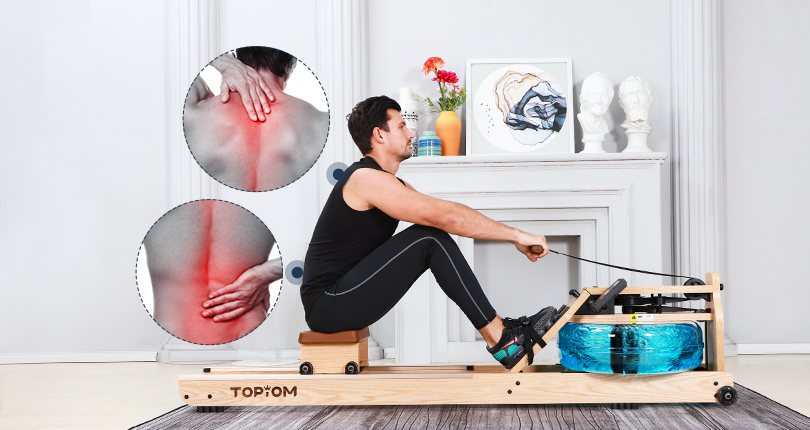
1.1 Lower back pain while rowing
Lower back pain (LBP) or lumbago is commonly experienced by rowers, even the most professional rowers. This is mostly because of undertaking intensive training. The pain may radiate to the buttocks when there is an injury to the lower back discs. Pain may occur at the end of a rowing stroke when extending your legs and also when sitting. Sometimes the back goes into spasm and the rower cannot bend forward far enough to touch their toes.
Lower back pain is usually connected with butt pain while rowing.
1.2 Upper and middle back pain while rowing
Upper and middle back pain or thoracic back pain is mostly experienced by rowing beginners, particularly those who’re lacking proper rowing techniques. As rounded shoulders and text neck (forward head posture) can combine to wreck your upper and middle back while rowing. It can occur anywhere from the base of your neck to the bottom of your rib cage.
Upper back pain is usually connected with neck pain and shoulder pain while rowing.
2. Causes and Fixes of Rowing Machine Back Pain?
Let’s take a step back and find out the major causes of rowing machine back pain and how to easily fix it. Thus, we can row safely and pain-free to reap the rich benefits of rowing.
When it comes to the rowing machine back pain, overtraining, wrong rowing technique, and improper rowing machine setting are the major risk factors.
2.1 Overuse/Overtraining
Cause #1: Overtraining
Overuse or overtraining is the commonest cause of rowing machine back pain. It can occur when you increase your training level suddenly or change the frequency of your rowing training.
Starting an exercise program that is more strenuous than you are ready for can result in injury and serious medical problems.
Easy fix:
Don’t overexert yourself when you’re first starting out. Even when you progress and get used to it, don’t overtrain. Moderation of your rowing workout’s intensity, quantity, and duration is essential for back pain or injury prevention.
To help make rowing a habit, be sure to stop exercising when you’re too tired to maintain proper form.
2.2 Wrong rowing technique/Improper rowing form
Besides overtraining, beware of some of the most common rowing machine mistakes that lead to improper rowing form, and cause back pain during or after your rowing sessions.
Cause #2: Hunching your back rather than sitting up straight
Many rowers row with improper posture on the rowing machine. Most commonly, the rowing machine back pain comes from hunching your back. It causes the shoulders to rise, the chest to sag, and the lower back to slump.
Hunching your back means your muscles aren’t given the space they need. You’re not using the full potential of those muscles. Moreover, you are putting strain on your back, which will cause low back pain.
Easy fix:
During your workout, focus on engaging your core so that you’re in a strong, supported position. By turning on your abs, you can keep yourself upright and your spine will be always in neutral.
Relax your shoulders but not arch or hunch. In this way, your shoulders can pull back and down.
Cause #3: Leaning back extremely
In order to get the length in the stroke, you might be inclined to pull the handle all the way to the face, resulting in an extreme layback of your upper body. This is also a mistake most rowers make at the end of the drive phase and the finish phase.
Unfortunately, an extreme layback is a weak position. It doesn’t contribute powerful length to your stroke. As the power is lost in this case and you don’t perform an effective stroke. Even worse, it puts a lot of pressure on your low back and your hip. Day by day, you’ll get hurt and suffer from low back pain and butt pain.
Easy fix:
Get long in the front, while keeping the knees just under the arms, the hamstrings loaded and the back tight. Engage your core to find a powerful and comfortable finish.
Or, try this: Picture your body as the hand of a clock.
Ideally, rower’s happy hour served between 11 o’clock and 1 o’clock. It’s a metaphor describing the positions of your back while rowing. It’s in a 1 o’clock position at the catch and an 11 o’clock position at the finish or full extension.
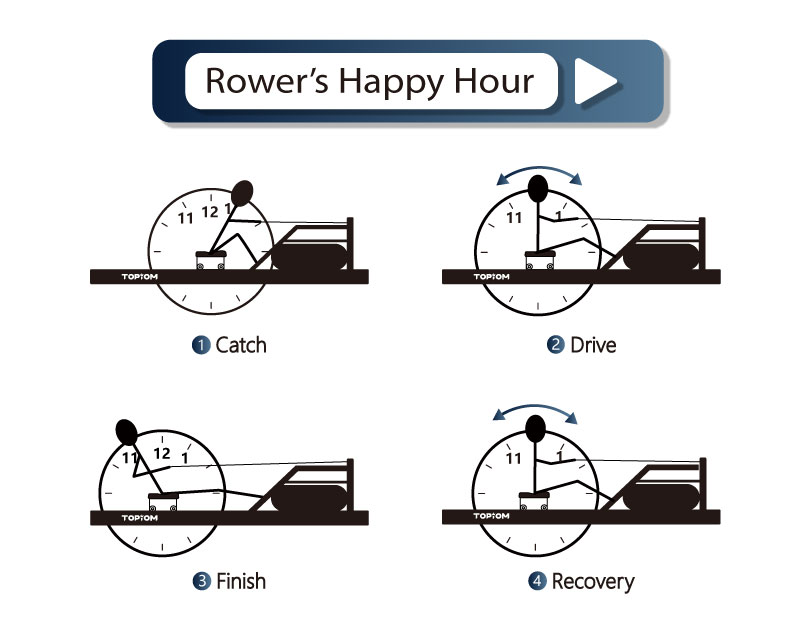
The wrong rowing technique can end up exacerbating your condition rather than improving it. Mastering the correct technique is always important to help you get started and achieve results without risking injury.
For a more comprehensive guide, check out our blog post: indoor rowing technique 101. You’ll get a complete step-by-step guide including rowing form, breathing, power exertion, and stroke timing.
2.3 Improper rowing machine setting
Cause #4: Improper height of the performance monitor, tablet, or phone holder
Do you check the data on your performance monitor or the rowing apps on your phone or tablet? Do you use an iPad or smartphone to watch your favorite shows on Netflix while on the rowing machine?
If your answer is YES, beware of the height of these devices during rowing. Because improper height setting of these devices will cause damage to your neck and spine. When the devices are set below your eye level, you tend to lean in when reading off the screen. Your body will then resort to a hunched back to accommodate the long-term poor posture.
Leaning in or hunching your back repeatedly can cause damaging degeneration to your spine. It will further lead to upper back pain if left long-term and without postural correction.
Easy fix:
Lift Devices to your eye level. To begin working on breaking the poor posture habit of “back hunching” start holding your head up and straight with your natural line of sight. For example, your eyesight should be level to the ground beneath you. Additionally, bring your phone up towards your face to see the screen without looking down.
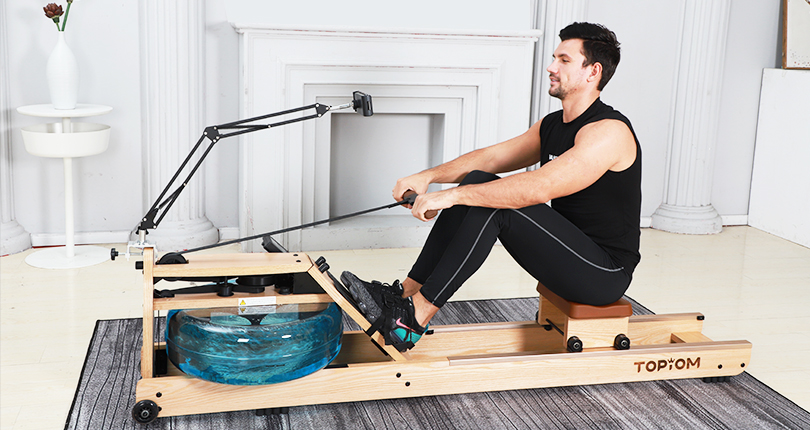
In the context of working out at home, find a way to raise your device screen to be eye-level with you. This can be done by purchasing an adjustable monitor stand or casting the screen of your smartphone or tablet on a TV.
3. Best Rowing Stretches to Relieve Rowing Machine Back Pain
Apart from the remedies mentioned above, there are some stretches you could do daily to alleviate or avoid rowing machine back pain.
Stretching is very beneficial in that it gives you a nice passive recovery. It helps to stretch and soothe those muscles which really working so hard when rowing. Besides, it brings blood flow to your muscles and joints and increases your range of motion and mobility.
Hang out on each of the stretches for about 1 minute to 3 minutes, allow your muscles to relax. You can hold on to each pose for 20 to 30 seconds, relax, and repeat 2 to 8 times. With every breath, let one layer of your stress go. Breath slow and with intention.
Caution:
When you’re practicing these stretches, please move slowly in and out of the poses. Keep your breath smooth and always practice within your own range of limits and abilities.
a) Seated forward bend
The seated forward bend is an excellent stretching pose. It is beneficial for alleviating the pressure on your lower back from stretching your leg muscles. This pose is the favorite stretch recommended by Training Tall(one of the most popular rowing coach on Youtube) to relieve lower back pain.
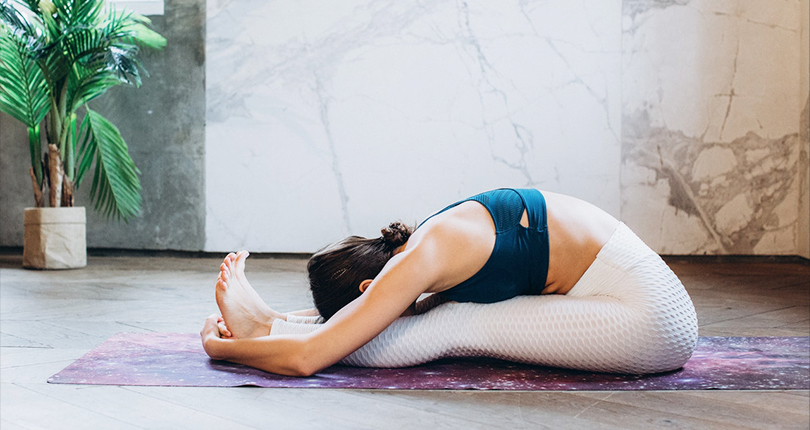
Benefits:
- Increases the flexibility of your hamstrings, calves, glutes, and muscles in the backs
- Alleviates strain and stiffness on the low back since leg muscles are connected to the pelvis
- Boosts circulations
- Improves postures
How to do this pose:
- Sit on a mat or on the floor.
- Stretch your legs out in front and keep a soft bend in the knee.
- Keep your back straight and pull your toes up.
- Inhale and extend your hands straight upward.
- Exhale and bend from your hips.
- Reach toward your toes and hold onto your shins, ankles, or feet — wherever your flexibility permits.
Note: If you’re new and find it’s a bit hard, you can hook a bath towel or long strap over the bottoms of your feet to help you stretch better.
b) Seated butterfly
The seated butterfly is an easy but immensely helpful stretching pose. It is beneficial for alleviating the pressure on your lower back from stretching your hips. It gives you a nice deep stretch, you’ll just feel really chilled out in that space and you’ll also start to find that your mind calms down and your breathing slows down and your heart rate slows down.
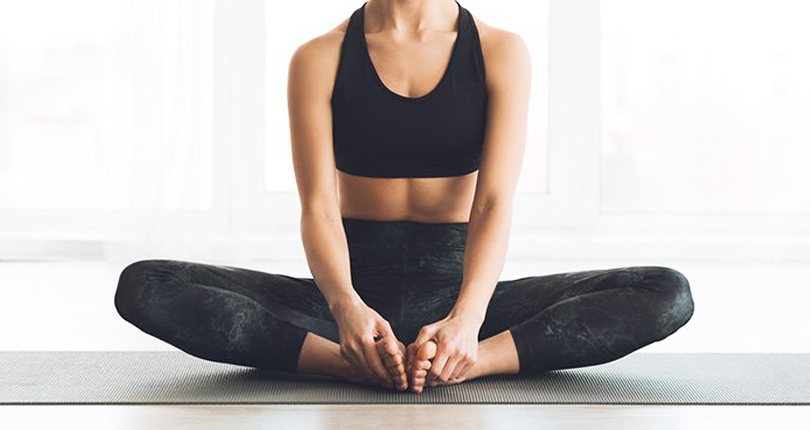
Benefits:
- Strengthens your back muscles
- Alleviates strain and stiffness on your hips, inner thighs, and knees
- Boosts circulation
- Improves your posture
How to do the pose:
- Sit with your legs spread out and your back straight.
- Bend your knees and bring your feet inwards keep your soles joined.
- Hold your feet tightly with your hands. (Or place your hands on your ankles or shins.)
- Inhale and press your thighs and knees down toward the floor.
- Keep your breathing normal and flap both legs up and down.
- Relax and slowly straighten your legs.
Get a nice deep stretch after your rowing workout, you’ll feel really chilled out in that space and you’ll also start to find that your mind calms down and your breathing slows down and your heart rate slows down.
4. Planking to Build a Strong Defense AGAINST Rowing Machine Back Pain
Building a strong core is your best defense against rowing machine back pain. If you have a weak core, you’re prone to overcompensate in your lower spine to complete a stroke on the rowing machine. This will also lead to lower back pain.
The classic plank is the most recommended move by rowing pros like Neil Totton, an instructor at CityRow in NYC. It’s versatile and fits a wide variety of ages, kids to seniors.
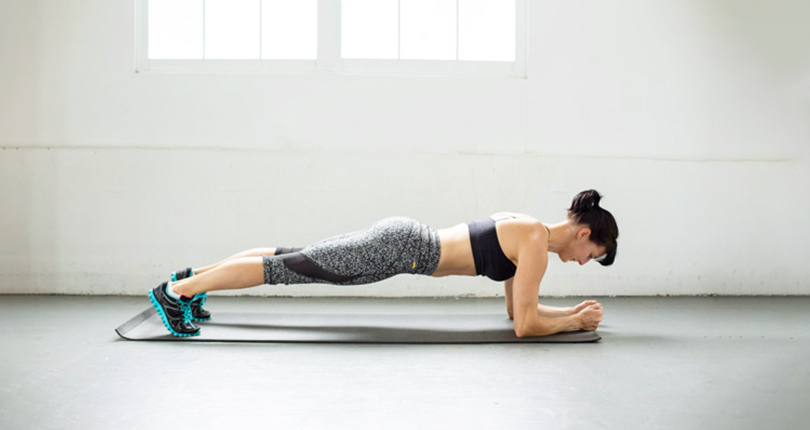
This core stabilization exercise is great to ensure that your back is fit for rowing. It builds muscle while not putting too much pressure on your spine or hips. Day by day, it strengthens your core and ensures more support and stability for your entire back, especially in the areas of your upper back.
Benefits:
- Builds core strength
- Decreases risk of back injury
- Boosts circulation
- Improves coordination and flexibility
- Improves your posture
How to do planks:
- Plant your hands directly under your shoulders (slightly wider than your shoulder width) like you’re about to do a push-up.
- Ground toes into the floor and squeeze glutes to stabilize your body. Your legs should be working, too — be careful not to lock or hyperextend your knees.
- Neutralize your neck and spine by looking at a spot on the floor about a foot beyond your hands. Your head should be in line with your back.
- Hold the position for 20 seconds.
As get more comfortable with the move, you can hold your plank for as long as possible without compromising your form or breath. As you progress, you can also try the variations of planks, like elbow plank, side plank, single-leg plank, and more.
Caution:
Warm up your body before practicing planks, especially in cold weather and in the early morning or at the start of your day.
5. Health Reminder
This article mainly focuses on the causes and fixes resulted from using a rowing machine.
If you have chronic back pain, it is necessary that you speak to your physician or doctor before trying any new exercise to avoid further back injuries.
The Bottom Line
If you feel back pain while rowing, first focus on improving your posture during the workout. Then, supplement your rowing with stretches that relieve the tension and pain on your muscles, as well as exercises that strengthen your core.
Rowing is an excellent way of improving both your physical and mental fitness. And I really hope that the rowing machine can be a pain-free tool for you to create a healthier and happier life!
For more rowing knowledge and product info about our Topiom water rowing machine, check here! We’re looking forward to having you back!


